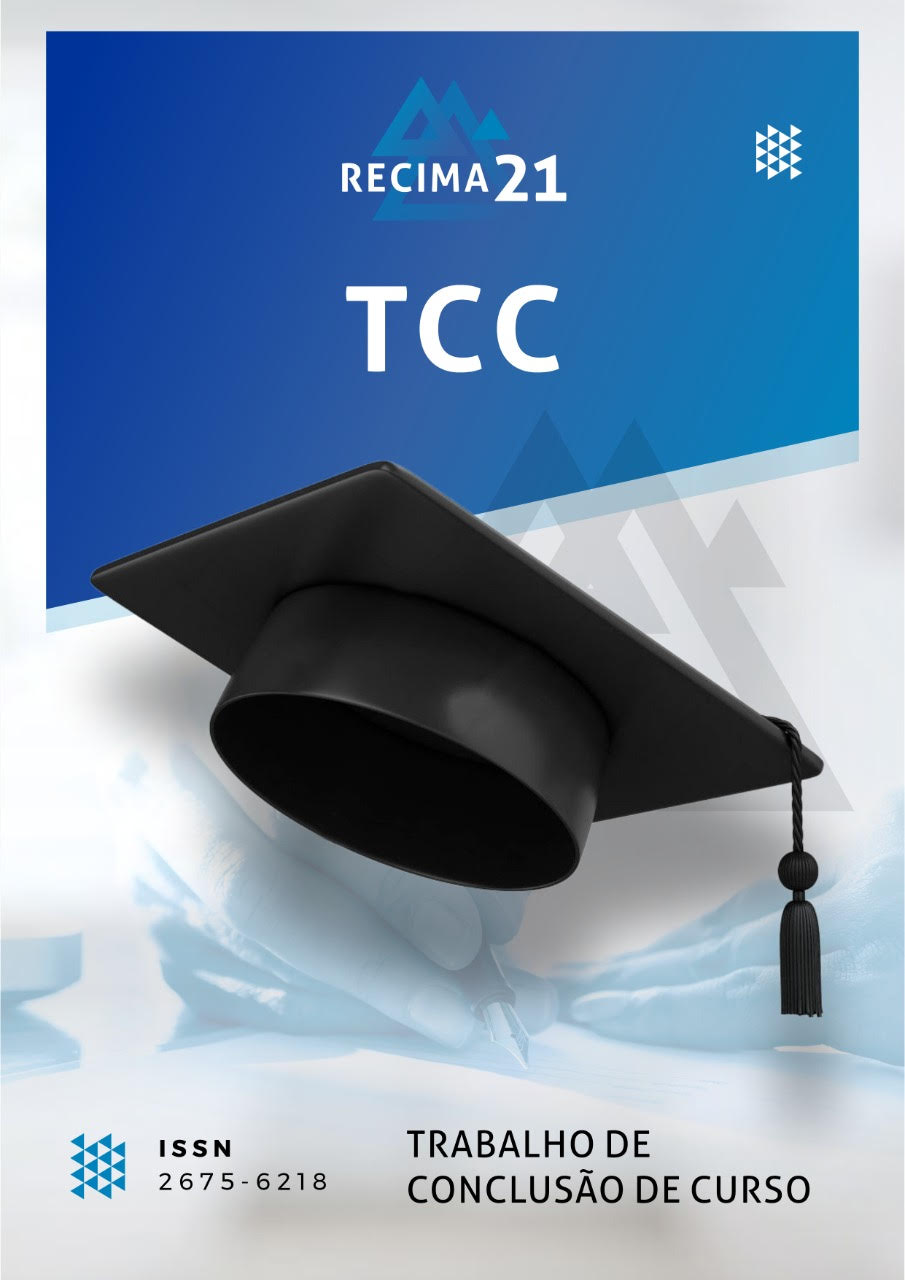FLEXIBILITY IN ELECTRONICS SYSTEMS: DYNAMIC IMPLEMENTATION OF FUNCTIONALITIES IN PROGRAMMABLE ELECTRONICS DEVICES
DOI:
https://doi.org/10.47820/recima21.v5i8.5643Keywords:
FPGA, SOFT CORE, Programmable Electronics, Sustainability, GyroscopeAbstract
This article presents the evolutionary potential of Field Programmable Gate Arrays (FPGA) in transforming the development and updating of electronic equipment. It focuses on the implementation of a Soft Core, which is an adaptable and configurable processing core via software, enhancing system processing and flexibility. The aim is to explore the practical applicability of this technology by demonstrating the development of a system based on XILINX's Spartan 7 FPGA. The methodology involved using the VIVADO suite to configure programmable logic blocks, implementing a Soft Core, and utilizing XILINX's VITIS IDE, where firmware was developed in C. The main results achieved were the initial integration of a temperature sensor, followed by the activation of a gyroscope sensor. The results were validated using DIGILENT's Analog Discovery 2 logic analyzer. The article concludes that adopting this technology can eliminate the need for physical revisions of electronic boards when adding new functionalities, resulting in significant savings in time, cost, and resources. An approach was proposed that not only increases the flexibility and adaptability of electronic equipment but also extends its lifespan and aligns product design with specific customer needs. This approach represents a substantial advancement in creating sustainable electronic solutions that are more energy-efficient, flexible, and effective.
Downloads
References
AZIZ, Syed Mahfuzul et al. Remote reconfiguration of FPGA-based wireless sensor nodes for flexible Internet of Things. Computers and Electrical Engineering, v. 100, 31 mar. 2022. doi.org/10.1016/j.compeleceng.2022.107935. DOI: https://doi.org/10.1016/j.compeleceng.2022.107935
BEGGS, Arthur de Natos. Projeto e Desenvolvimento de processadores RISC-V: em FPGA. Brasilia, 2021. Trabalho de Conclusão de Curso (Engenharia Mecatrônica) - Universidade de Brasília, Brasilia, 2021.
DUARTE, Newton Silva. A Dinâmica Ética das Máquinas em Inteligência Artificial: O Novo Papel do Professor de Filosofia. Revista Ibero-Americana de Humanidades, Ciências e Educação, v. 7, n. 6, p. 968-995, 2021. doi.org/10.51891/rease.v7i6.1446, 2021. DOI: https://doi.org/10.51891/rease.v7i6.1446
FAISAL, I. Arun; PURBOYO, T. Waluyo; ANSORI, A. A Review of accelerometer sensor and gyroscope sensor in IMU sensors. J. Eng. Appl. Sci, v. 15, n. 3, p. 826-829, 2019. DOI: https://doi.org/10.36478/jeasci.2020.826.829
FU, Xiang. A heterogeneous quantum computer architecture. In: PROCEEDINGS OF THE ACM INTERNATIONAL CONFERENCE ON COMPUTING FRONTIERS. 2016, p. 323-330. DOI: https://doi.org/10.1145/2903150.2906827
GRAY, I. GRVI Phalanx: A Massively Parallel RISC-V FPGA Accelerator. In: IEEE 24TH ANNUAL INTERNATIONAL SYMPOSIUM ON FIELD-PROGRAMMABLE CUSTOM COMPUTING MACHINES (FCCM). 2016, doi: 10.1109/FCCM.2016.12.: IEEE, p. 17-20. DOI: https://doi.org/10.1109/FCCM.2016.12
GUNDERSEN, Martin. Analyzing an FPGA Neural Network Accelerator Design for Implementation in an ASIC. 2019 Tese (Doutoado) - Faculty of Information Technology and Electrical Engineering, Ntnu - Norwegian University Of Sciences And Technology, 2019.
HOLLER, R et al. Open-Source RISC-V Processor IP Cores for FPGAs: Overview and Evaluation. In: 8TH MEDITERRANEAN CONFERENCE ON EMBEDDED COMPUTING (MECO), BUDVA, MONTENEGRO, 2019. doi: 10.1109/MECO.2019.8760205, p. 1-6. DOI: https://doi.org/10.1109/MECO.2019.8760205
IEEE. Open Hardware: From open systems (OCP) to ISAs (RISC-V) and interconnects (CXL, UCIe) the open-source movement will expand into hardware. Technology Predictions, p. 24, 2023.
LAVEZ, Natalie; DE SOUZA, Vivian Mansano; LEITE, Paulo Roberto. O papel da logística reversa no reaproveitamento do “lixo eletrônico”: um estudo no setor de computadores. Revista de Gestão Social e Ambiental, v. 5, n. 1, 2011. DOI: https://doi.org/10.5773/rgsa.v5i1.263
LINDHOLM, Erik, et al. "NVIDIA Tesla: A unified graphics and computing architecture." IEEE Micro, v. 28, n. 2, p. 39-55, 2008. doi:10.1109/MM.2008.31. DOI: https://doi.org/10.1109/MM.2008.31
PATEL, Shyamal, et al. "A review of wearable sensors and systems with application in rehabilitation." Journal of Neuro Engineering and Rehabilitation, v. 9, n. 1, p. 1-17, 2012. doi:10.1186/1743-0003-9-21. DOI: https://doi.org/10.1186/1743-0003-9-21
RIEGER, Michael L. Retrospective on VLSI value scaling and lithography. Journal of Micro/Nanolitography, MEMS, and MOEMS, v. 18, n. 4, 26 nov. 2019. doi: 10.1117/1.JMM.18.4.040902. DOI: https://doi.org/10.1117/1.JMM.18.4.040902
ROCKETT, Leonard et al. Radiation-hardened FPGA technology for space applications. In: IEEE AEROSPACE CONFERENCE, p. 1-7, 2007. DOI: https://doi.org/10.1109/AERO.2007.353098
ROSSINI, Valéria; NASPOLINI, S. H. D. F. Obsolescência programada e meio ambiente: a geração de resíduos de equipamentos eletroeletrônicos. Revista de direito e sustentabilidade, v. 3, n. 1, p. 51-71, 2017. DOI: https://doi.org/10.26668/IndexLawJournals/2525-9687/2017.v3i1.2044
SHI, Weisong, et al. "Edge computing: Vision and challenges." IEEE Internet of Things Journal, v. 3, n. 5, p. 637-646, 2016. doi:10.1109/JIOT.2016.2579198. DOI: https://doi.org/10.1109/JIOT.2016.2579198
TANENBAUM, Andrew; FEAMSTER, Nick; WETHERALL, David. Redes de Computadores. Porto Alegre: Bookman Editora, 2021. 796 p.
TRIMBERGER, Stephen M. Field-Programmable Gate Array Technology. Proceedings of the IEEE, v. 81, n. 7, p. 1031-1040, 1993. doi:10.1109/5.231342. DOI: https://doi.org/10.1109/5.231342
Downloads
Published
Issue
Section
Categories
License
Copyright (c) 2024 RECIMA21 - Revista Científica Multidisciplinar - ISSN 2675-6218

This work is licensed under a Creative Commons Attribution 4.0 International License.
Os direitos autorais dos artigos/resenhas/TCCs publicados pertecem à revista RECIMA21, e seguem o padrão Creative Commons (CC BY 4.0), permitindo a cópia ou reprodução, desde que cite a fonte e respeite os direitos dos autores e contenham menção aos mesmos nos créditos. Toda e qualquer obra publicada na revista, seu conteúdo é de responsabilidade dos autores, cabendo a RECIMA21 apenas ser o veículo de divulgação, seguindo os padrões nacionais e internacionais de publicação.













